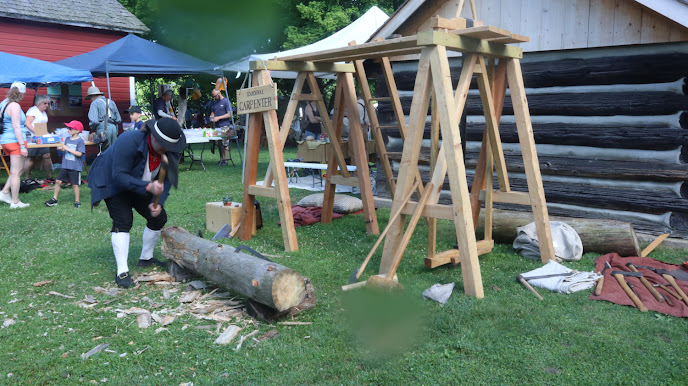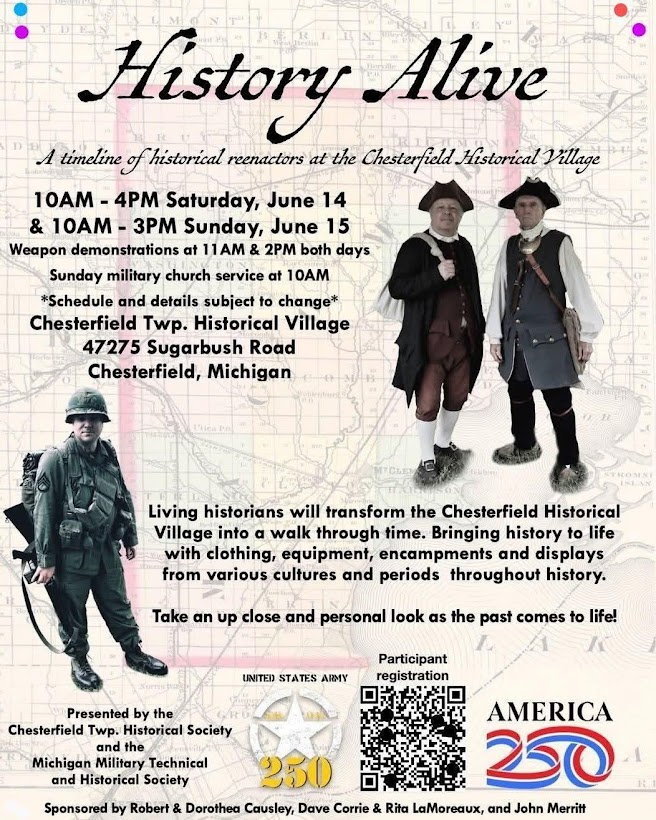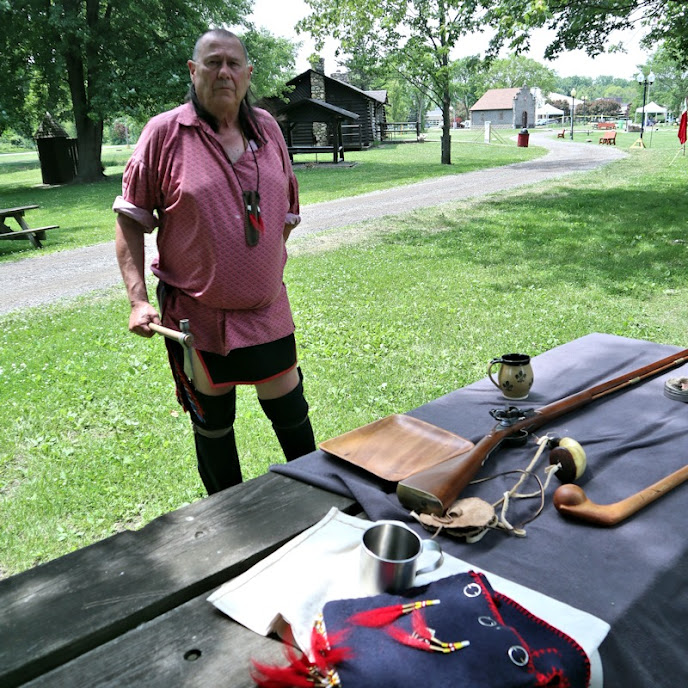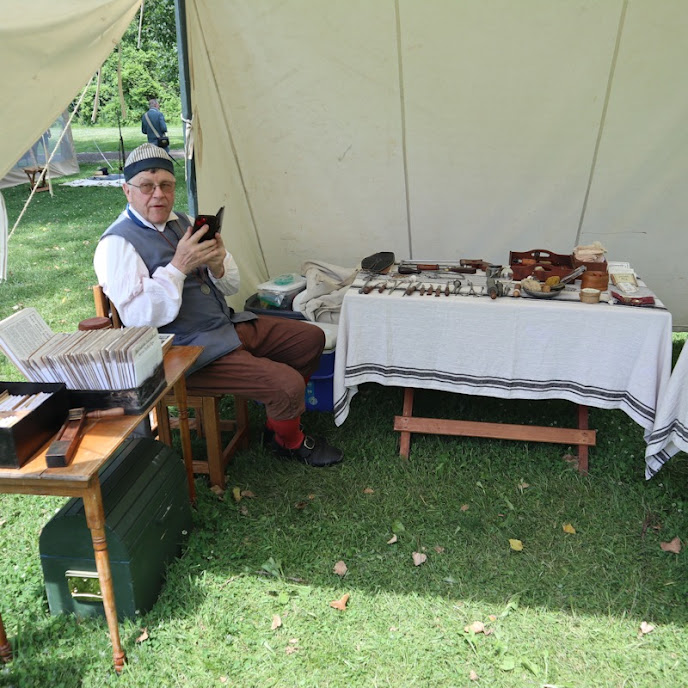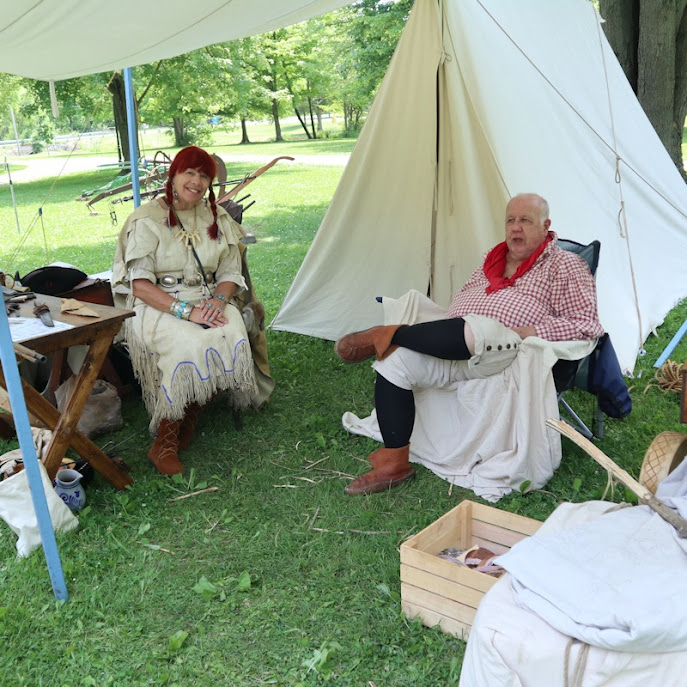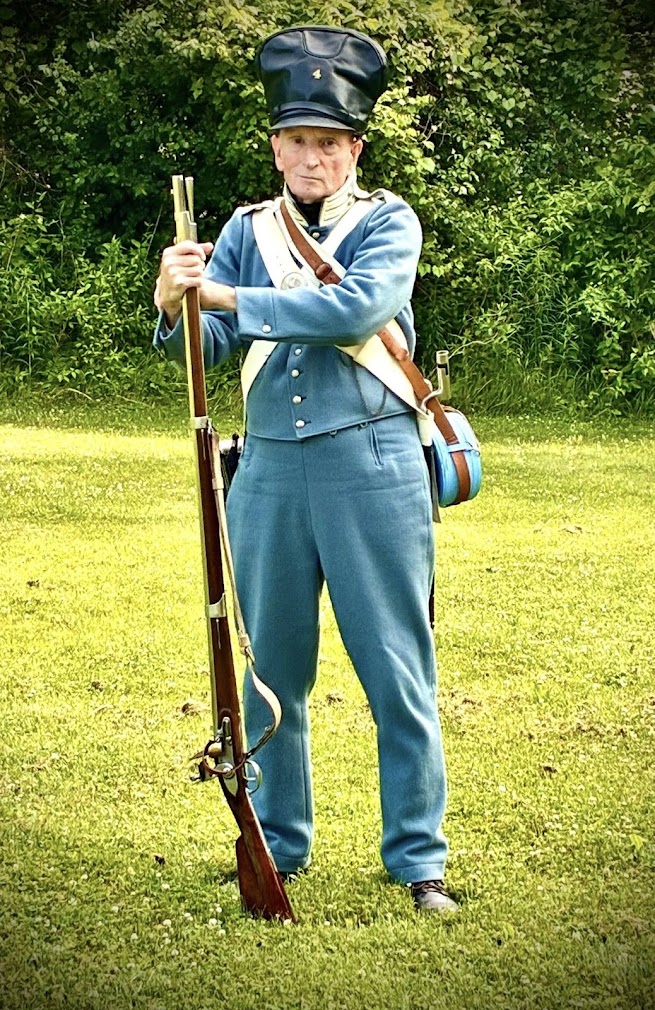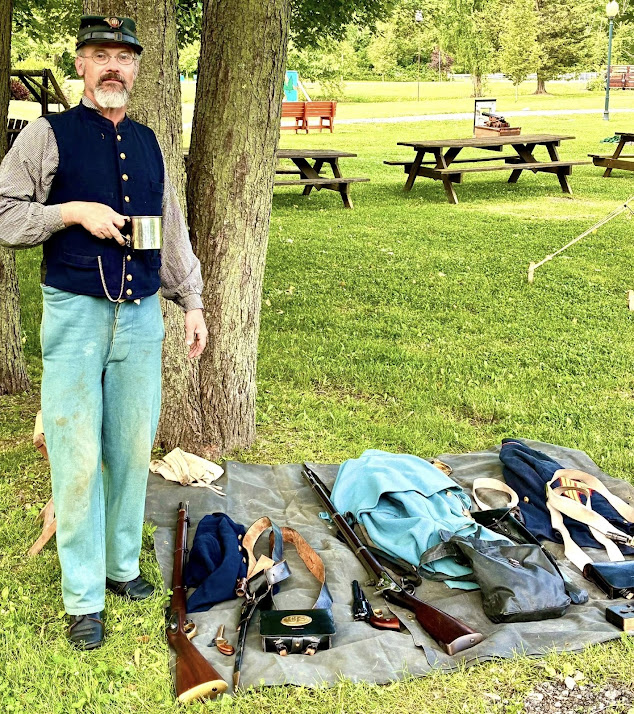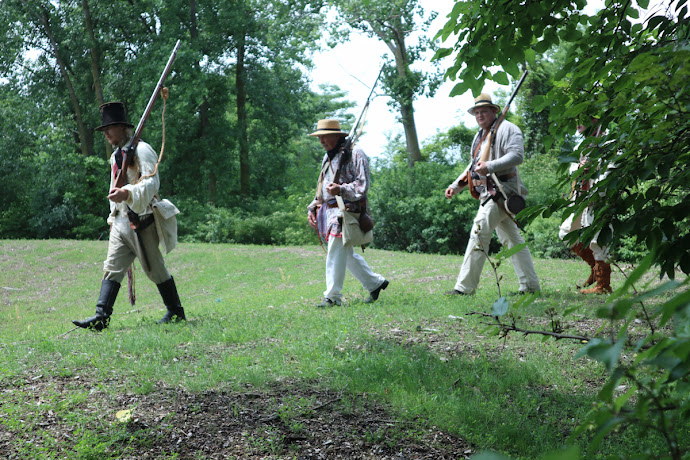Michigan is a state filled with historical surprises. For instance, we are the number one state in the union for lighthouses. Yes, it's true---no other US state has near as many lighthouses as Michigan. I mentioned this to a person while in Massachusetts and he didn't believe me. I told him to look it up, which he did on his phone, then shook his head: "I'll be damned!"
Here's something else: we are only five out of the fifty states in log cabins:
Colorado
New York
North Carolina
Wisconsin
~~Michigan~~
Pennsylvania
Ohio
Texas
Minnesota
New Hampshire
In fact, Michigan Log Cabin Day is celebrated annually on the last Sunday in June to honor the state's pioneer heritage. Here in 2025, Log Cabin Day fell on June 29th. It's a day when many historic log cabins across Michigan opened their doors to the public, offering a glimpse into the pioneer past through tours, activities, and demonstrations. It's a unique Michigan tradition. The day aims to educate and celebrate the history and importance of log cabins and the pioneer spirit in our wonderful state.
So it only makes sense to celebrate our cabin heritage at Waterloo's Log Cabin Day Weekend!
 |
| Waterloo turned it into a historical family affair! |
though Michigan would have eventually become a state, I do not believe statehood would have come as early as January 1837 if it weren't for the Erie Canal, for before the Erie Canal, transportation to Michigan by water was "dangerous, unreliable, and fraught with discomfort." To reach Detroit from the south by land it was necessary to cross the Black Swamp in northwestern Ohio. "The Great Black Swamp, also known simply as the Black Swamp, was a glacially fed wetland in northwest Ohio and northeast Indiana. In rainy periods the swamp was virtually impassable. The horrors of the swamp were widely publicized. At a time when plenty of good land was still available in Ohio, Indiana, and Illinois, there was little incentive for the pioneer to brave the hazards involved in getting to Michigan."
Until the opening of the Erie Canal.
Completion of the Erie Canal in 1825, connecting Lake Erie with the Hudson River, was an event of major importance in Michigan history because it greatly eased the transportation of passengers and freight between the eastern seaboard and Michigan ports. Although originally intended to mainly haul goods and freight, immigrants from the east coast soon discovered that traveling west was faster and cheaper on the canal than by carriage. For the first time, New York and New England families, anxious to leave rocky and infertile fields for richer lands in the West, or of want of an adventure, finally had a route for reaching the "promised land." And to travel further inwards into the state, one would take a stage line through the thick forests.
So, Michigan has a high concentration of log cabins due to its history as a frontier state and the abundance of timber resources, for these early settlers found vast forests and used readily available logs to quickly construct affordable and practical homes. These log cabins served as a starting point for settling the land, often followed by more permanent structures.
That's what we were celebrating!
And the weather that day was perfect~
After a couple weeks of steamy temperatures (high 90s), days of downpouring rain showers, and horrible humidity, we had what you might call the perfect day. The sun was out and the temps along with the humidity were much lower. It made it bearable for us to wear our 1860s clothing.
This is also soldier weekend at Waterloo, and the artillery were there, garnering applause from the many spectators who loved hearing the cannons:
Events such as this show celebrating America in all its glory---
After a couple weeks of steamy temperatures (high 90s), days of downpouring rain showers, and horrible humidity, we had what you might call the perfect day. The sun was out and the temps along with the humidity were much lower. It made it bearable for us to wear our 1860s clothing.
Yes, 1860s clothing!
This is pretty much the only Waterloo Day out of the year that we are asked to reenact the 1860s rather than the colonial era, for our main objective was to speak about the log cabin settlers and pioneers of 19th century Michigan.
For us, any day at the cabin is an agricultural day, for that was what the past was all about: farming and having a kitchen garden.
 |
| Whether in colonial clothing or 1860s clothing, the first thing when we arrived was to head out to our kitchen garden. |
 |
| Charlotte and Patty out pulling weeds. |
 |
| I do love the fact how we have taken to our agricultural past, whether 1770s or 1860s, when so many have a fear of getting their period clothing dirty. |
 |
| It's only the end of June and we have a good-size turnip! |
 |
| Here comes Charlotte from the kitchen garden with early summer yield. |
 |
| Patty helped to prepare our afternoon meal---fresh from the garden! |
 |
| Friend Miranda captured us watching the cannon demonstration. |
 |
| It did warm up in the afternoon, and by having both doors open, we got a nice cross breeze, which Patty enjoyed greatly. |
 |
| Me and my wife and Charlotte - we all had a wonderful day together! |
 |
| Glad I was paying attention, for the booming of the cannon scared the crap out of those who weren't. |
Being that on this day we were less than a week from Indepence Day:
BOOM! The cannons leaped backward, the air was full of flying grass and weeds. Everybody was exclaiming about what a loud noise they had made.
"That's the noise that made the Redcoats run!" Mr. Paddock said to Father.
"Maybe," Father said, tugging his beard. "But it was muskets that won the Revolution. And don't forget it was axes and plows that made this country."
"That's so, come to think of it," Mr. Paddock said.
That night when they were going to the house with milk, Almanzo asked Father: "Father, how was it axes and plows that made this country? Didn't we fight England for it?"
"We fought for Independence, son," Father said. "It was farmers that took that country and made it America."
"How?" Almanzo asked.
"Spaniards were soldiers that only wanted gold. The French were fur traders, wanting to make quick money. And England was busy fighting wars. But we were farmers, son; we wanted the land. It was farmers that went over the mountains, and cleared the land, and settled it, and farmed it, and hung on to their farms. It's the biggest country in the world, and it was farmers who took all that country and made it America. Don't you ever forget that."
(from "Farmer Boy" by Laura Ingalls Wilder)
 |
| Colonial Tom the Toyseller was there. |
 |
| Jim showed a variety of historic fire arms. |
 |
| Soldiers? You wanted soldiers? |
 |
| Could you wear your brogans all day without socks? |
 |
| There was music...sweet music...there was music everywhere~~~ |
 |
| Some of the blacksmiths set up shop in their camps |
 |
| In the Waterloo Blacksmith Shop |
 |
| There was also a tinsmith as well. |
 |
| And these are a few of his wares. |
 |
| A carpenter demonstration |
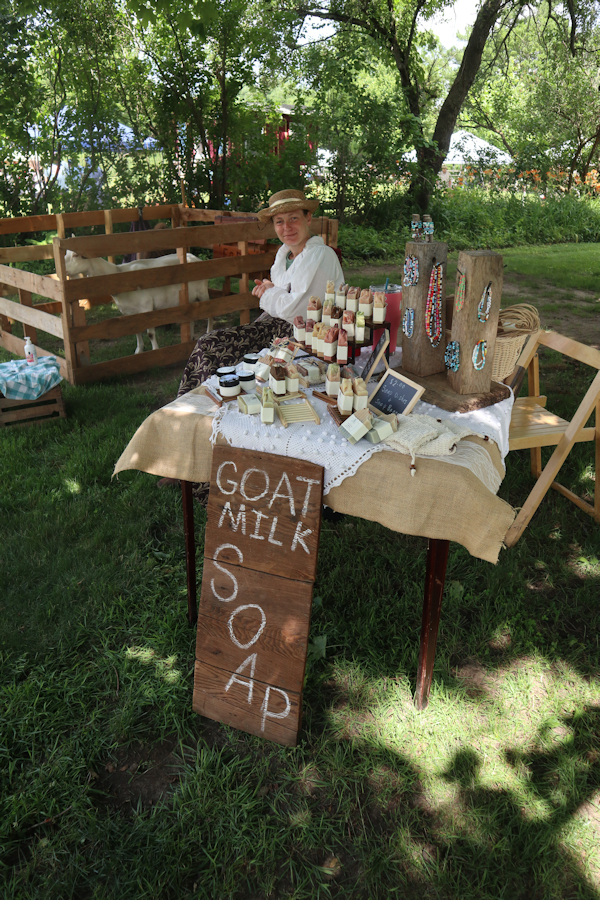 |
| Non-gmo soaps. Homemade soap is the only kind we purchase |
 |
| Proof of authenticity (lol). Yes, here are a couple of goats that I believe supplied the main ingredient |
 |
| Doug and Sally Sally's sewing shirts for soldiers while Doug re-cane's chairs~ |
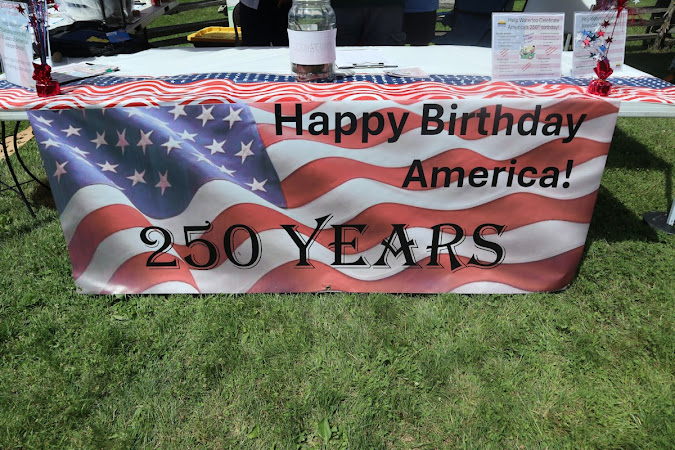 |
| I was so glad to see someone there that was promoting America's 250th! |
When we walked into the cabin that morning upon our arrival, all three of us felt the same: we're home! There's an air of easiness about being at this cabin. It simply feels almost like ours. Like we belong. And our stress and tensions just seem to drift away...though I must admit---I think we all admit---we felt a little odd wearing our 1860s clothing there.
Until next time, see you in time.
I have many, many blog entries here in Passion for the Past about pioneer days in Michigan and the US. Just by typing into the box available in the upper left corner words such as "medical", "taverns", " historic food", historic farming", "historic clothing", "historic music", "Michigan history", and many other subjects of your interests, it should take you to my other posts that you may be interested in.
Also, be sure to look for links at the bottom of most of my posts, such as what you see below here:
~If you are interested in learning more about Michigan's cabins, please click HERE
~If you are interested to learn more about Michigan pre-Statehood structures that are still standing, please click HERE
If you are interested in our colonial cabin experiences, I think you might enjoy any of the links below:
~To read about our 2020 excursion - our first autumn at the cabin - click HERE
~To read about our 2021 wintertime excursion at the cabin - click HERE
~To read about our 2021 springtime excursion at the cabin - click HERE~To read about our 2021 summertime excursion at the cabin - click HERE
~To read about our 2021 summer harvesting of the flax at the cabin - click HERE
~To read about our 2021 autumn excursion - click HERE
~To read about our 2022 winter excursion at the cabin - please click HERE
~To read about our 2022 spring excursion at the cabin - please click HERE
~To read about our 2022 summer excursion at the cabin - please click HERE
~To read about our 2022 autumn excursion at the cabin (Pioneer Day) - please click HERE
~To read about our 2023 winter excursion at the cabin - please click HERE
~To read about our 2023 spring excursion at the cabin - please click HERE
~To read about our 2023 late spring at the cabin - click HERE
~To read about the 2023 early summer - please click HERE
~To read about the 2023 mid-summer - please click HERE
~To read about the 2023 autumn Pioneer Day - please click HERE
~To read about our 2023 Thanksgiving harvest celebration - please click HERE
~To read about our 2024 Winter experience at the cabin - please click HERE
~To read about our 2024 spring excursion at the cabin - please click HERE
~To read about our 2024 late spring with just Patty & I - click HERE
~To read about our 2024 summer - please click HERE
~To read about our 2024 mid-and-late-summer - please click HERE
~To read about our 2024 mid-September - click HERE
~To read about our 2024 autumn Pioneer Day Celebration - please click HERE
You may notice I did not include previous 1860s cabin days in the links here. Our colonial experiences tell a different story.
Until next time, see you in time.
- - -


